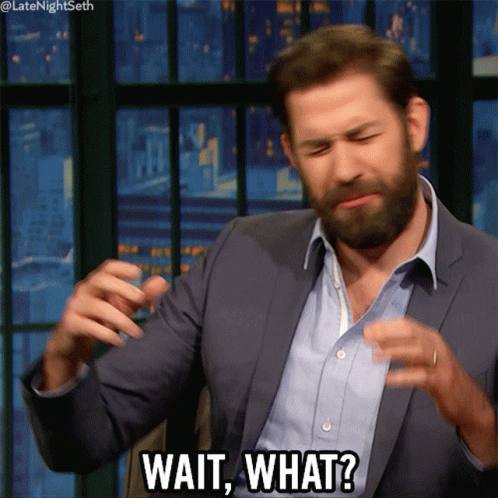If I were to point out one scene from the entire movie that gave me goosebumps and propelled me to write this article, then it had to be this last scene:

Captain Sully: So, no thrust.
Davis: As you testified, it was completely destroyed. The ACARS [aircraft communications addressing and reporting system] data was wrong.
I’d like to add something on a personal note. I can say with absolute confidence that, after speaking with the rest of the flight crew, bird experts, and aviation engineers, running through every scenario, and interviewing each player, there is still an X in this result. And it’s you, Captain Sullenberger. Remove you from the equation, and the math just fails.

Captain Sully: I disagree. It wasn’t just me. It was all of us. It was Jeff and Donna and Sheila and Doreen and all of the passengers, the rescue workers, the air traffic control and ferryboat crews, and the scuba-cops.
We all did it. We survived.

Did you hear what Sully just said?
Let that sink in.
It wasn’t just me.
It was all of us.
It was Jeff and Donna and Sheila and Doreen and all of the passengers, the rescue workers, the air traffic control and ferryboat crews, and the scuba-cops.
We all did it.
We survived.
I see a direct similarity in that last dialogue: "Security is not just the CISO's or Security Team's responsibility."
You could sarcastically say, Oh, I haven't heard that one before, and you would be right.
But have you ever seen an example that backs up that statement?? A real-life airplane crash, with dual engine failure at a 2800ft lower altitude than any jet in history, followed by an immediate water landing, with 155 souls on board. No one has ever trained for an incident like that.
I bet you haven't.

The movie "Sully - The Miracle on the Hudson" recounts the events of January 15, 2009, when Captain Chesley "Sully" Sullenberger and his crew managed to save the lives of all 155 passengers on board US Airways Flight 1549, which had to make an emergency landing on the Hudson River after a bird strike turned off both engines.
In this blog post, I will share some key lessons that can be life-altering at the very least, if not quite literally, life-saving, as was in the case of 155 people on board who survived the emergency landing, dubbed "The Miracle on the Hudson."
The movie Sully is a gold mine of lessons you can learn from, ranging from leadership, Incident Response, Mastery, and Flow, to say the least.
While it may not be possible to list them all here, I will share seven lessons.
1. Mastery
Lesson 1: Trust Your Intuition
One of the most striking aspects of Sully's story is how he relied on his intuition to make a split-second decision that saved lives.
He did not follow the standard protocol of returning to LaGuardia Airport or diverting to Teterboro Airport, which would have been too risky given the plane's altitude and speed. Instead, he chose to land on the Hudson River, an unconventional but safer option.
Sully's intuition was based on his extensive pilot experience and knowledge of aircraft and their systems. He had flown for over 40 years and logged over 20,000 hours in various planes. He also had a background in aviation safety and accident investigation. He knew how to assess the situation quickly and accurately and act accordingly.
In incident response, we must also trust our intuition when faced with complex and uncertain situations.
- We must leverage our expertise and experience to make informed judgments based on available data and evidence. We need to be confident in our abilities and not second-guess ourselves or be swayed by external pressures or opinions.
- Of course, intuition alone is not enough. We also need to validate our assumptions and hypotheses with facts and logic.
- We must communicate clearly with our team members and stakeholders about our actions and rationale.
- We need to document our decisions and outcomes for future reference and learning.
2. Incident Response
Lesson 2: Continuous Improvement
Review, Reflect & Investigate
After the incident, Captain Sully and his crew investigated to determine the root cause of the problem and identify areas for improvement.
CISOs should similarly conduct post-incident reviews to identify what went well and what could be improved in their incident response plan. These reviews can help to refine incident response procedures and prevent similar incidents from occurring in the future.
Lesson 3: Preparation is THE Key
Captain Sully and his crew could handle the emergency successfully because they had undergone extensive training and had practiced emergency procedures many times before.
Similarly, CISOs should ensure that their organization has a well-defined incident response plan and that all employees are trained. Regular rehearsals of the plan can help identify gaps and areas for improvement.
Lesson 4: Stay Calm Under Pressure
Another remarkable aspect of Sully's story is how he stayed calm under pressure during the, realized both engines were out, Sullyeal.
He did not panic or lose his way out. He showed no fear or anxiety when he announced the "brace for impact" to the passengers, and he expressed no emotion or relief when he landed safely on the water. Sully's calmness under pressure resulted from his training and discipline as a pilot and former US Air Force fighter pilot.
He had learned to cope with stress and adversity in various challenging situations. He had developed mental toughness and resilience that enabled him to focus on his task without being distracted by negative thoughts or emotions.
When responding to incidents, we must remain calm under pressure. We must also control our emotions and reactions so they do not interfere with our performance or judgment.
We must maintain an optimistic attitude to help us overcome difficulties and challenges. We must practice mindfulness techniques such as breathing exercises, meditation, or visualization to relax and cope with stress.
3. Leadership
Lesson 5: Clear Communication is Critical
During the emergency landing, Captain Sully and his crew communicated clearly and effectively with each other, as well as with air traffic control and emergency responders.
CISOs should ensure that their incident response plan includes clear communication protocols and that all employees know them. They should also establish relationships with external stakeholders, such as law enforcement, regulatory bodies, and public relations professionals, who may need to be involved in incident response.
Lesson 6: Clear Thinking & Decision-Making under Pressure
Captain Sully and his crew had to make critical decisions quickly in a high-pressure situation.
Similarly, CISOs may need to make difficult decisions during a cybersecurity incident, such as shutting down systems or notifying law enforcement. A transparent decision-making process and designated decision-makers can help ensure that decisions are made quickly and effectively.
Lesson 7: Work As A Team
A third important aspect of Sully's story is how he worked in a team with his co-pilot, crew members, air traffic controllers, ferry operators, rescue workers,
and other parties involved in the incident.
He did not act alone or isolate himself from others.
He collaborated effectively with his co-pilot, Jeff Skiles, who supported him throughout the flight. He communicated clearly and professionally with air traffic controller Patrick Harten, who guided him during the emergency. He coordinated smoothly with flight attendants Doreen Welsh, Sheila Dail,
and Donna Dent, who prepared the passengers for evacuation.
He gratefully thanked those who helped him land safely and rescue everyone on board. Sully's teamwork skills were essential for achieving a successful outcome in a complex and dynamic situation. He understood that he could not do everything by himself and needed others.





